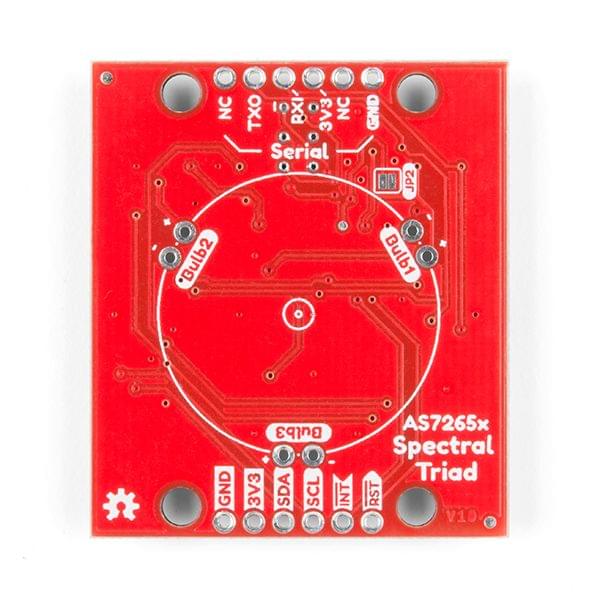- TRANSDUCERS
- TRANSDUCERS
- BASIC COMPONENTS DK
- BASIC COMPONENTS DK
- MARKETPLACE
- MARKETPLACE
- DEVELOPMENT BOARDS & KITS
- DEVELOPMENT BOARDS & KITS
- CABLE ASSEMBLIES
- CABLE ASSEMBLIES
- RF AND WIRELESS
- RF AND WIRELESS
- BOXES ENCLOSURES RACKS
- BOXES ENCLOSURES RACKS
- AUDIO PRODUCTS
- AUDIO PRODUCTS
- FANS-BLOWERS-THERMAL MANAGEMENT
- FANS-BLOWERS-THERMAL MANAGEMENT
- WIRELESS MODULES
- WIRELESS MODULES
- TERMINALS
- TERMINALS
- Cables/Wires
- Cables/Wires
- SINGLE BOARD COMPUTER
- SINGLE BOARD COMPUTER
- BREAKOUT BOARDS
- BREAKOUT BOARDS
- LED
- LED
- TEST AND MEASUREMENT
- TEST AND MEASUREMENT
- POTENTIONMETERS AND VARIABLE RESISTORS
- POTENTIONMETERS AND VARIABLE RESISTORS
- DEVELOPMENT BOARDS AND IC's
- DEVELOPMENT BOARDS AND IC's
- EMBEDDED COMPUTERS
- EMBEDDED COMPUTERS
- OPTOELECTRONICS
- OPTOELECTRONICS
- INDUSTRAL AUTOMATION AND CONTROL
- INDUSTRAL AUTOMATION AND CONTROL
- COMPUTER EQUIPMENT
- COMPUTER EQUIPMENT
- CONNECTORS & INTERCONNECTS
- CONNECTORS & INTERCONNECTS
- MAKER/DIY EDUCATIONAL
- MAKER/DIY EDUCATIONAL
- TOOLS
- TOOLS
- MOTORS/ACTUATORS/SOLEENOIDS/DRIVERS
- MOTORS/ACTUATORS/SOLEENOIDS/DRIVERS
- FPGA HARDWARE
- FPGA HARDWARE
- ROBOTICS & AUTOMATION
- ROBOTICS & AUTOMATION
Description:
The SparkFun Triad Spectroscopy Sensor is a powerful optical inspection sensor also known as a spectrophotometer. Three AS7265x spectral sensors are combined alongside a visible, UV, and IR LEDs to illuminate and test various surfaces for light spectroscopy. The Triad is made up of three sensors; the AS72651, the AS72652, and the AS72653 and can detect the light from 410nm (UV) to 940nm (IR). In addition, 18 individual light frequencies can be measured with precision down to 28.6 nW/cm2 and accuracy of +/-12%. Utilizing our handy Qwiic system, no soldering is required to connect it to the rest of your system. However, we still have broken out 0.1"-spaced pins in case you prefer to use a breadboard.
The SparkFun Triad Spectroscopy Sensor communicates over I2C by default or over 115200bps serial. We've written a fully formed Arduino library to access all the various features include taking readings and illuminating LEDs all over the Qwiic I2C interface. In addition, the Triad can be setup to communicate over serial. The serial interface uses an AT command set.
The AS7265x should not be confused with highly complex photon spectrometers, but the sensor array does give the user the ability to measure and characterize how different materials absorb and reflect 18 different frequencies of light.
Features
- Selectable interface: I2C or Serial (115200bps)
- 18 frequencies of light sensing from 410nm to 940nm
- 28.6 nW/cm2 per count
- Accuracy of +/-12%
- Integrated 405nm UV, 5700k White, and 875nm IR LEDs
- Software control over each illumination LED as well as current control
- Optional external bulb or illumination control
- Programmed with latest firmware from AMS
- Home
- SparkFun Triad Spectroscopy Sensor - AS7265x (Qwiic)
SparkFun Triad Spectroscopy Sensor - AS7265x (Qwiic)
SIZE GUIDE
- Shipping in 10-12 Working days
- http://cdn.storehippo.com/s/59c9e4669bd3e7c70c5f5e6c/ms.products/5d4515737af4fc2baba7d8ec/images/5d4515737af4fc2baba7d8ed/5d4514ceac72922bacc1f095/5d4514ceac72922bacc1f095.jpg
Description of product
Description:
The SparkFun Triad Spectroscopy Sensor is a powerful optical inspection sensor also known as a spectrophotometer. Three AS7265x spectral sensors are combined alongside a visible, UV, and IR LEDs to illuminate and test various surfaces for light spectroscopy. The Triad is made up of three sensors; the AS72651, the AS72652, and the AS72653 and can detect the light from 410nm (UV) to 940nm (IR). In addition, 18 individual light frequencies can be measured with precision down to 28.6 nW/cm2 and accuracy of +/-12%. Utilizing our handy Qwiic system, no soldering is required to connect it to the rest of your system. However, we still have broken out 0.1"-spaced pins in case you prefer to use a breadboard.
The SparkFun Triad Spectroscopy Sensor communicates over I2C by default or over 115200bps serial. We've written a fully formed Arduino library to access all the various features include taking readings and illuminating LEDs all over the Qwiic I2C interface. In addition, the Triad can be setup to communicate over serial. The serial interface uses an AT command set.
The AS7265x should not be confused with highly complex photon spectrometers, but the sensor array does give the user the ability to measure and characterize how different materials absorb and reflect 18 different frequencies of light.
Features
- Selectable interface: I2C or Serial (115200bps)
- 18 frequencies of light sensing from 410nm to 940nm
- 28.6 nW/cm2 per count
- Accuracy of +/-12%
- Integrated 405nm UV, 5700k White, and 875nm IR LEDs
- Software control over each illumination LED as well as current control
- Optional external bulb or illumination control
- Programmed with latest firmware from AMS
NEWSLETTER
Subscribe to get Email Updates!
Thanks for subscribe.
Your response has been recorded.
INFORMATION
ACCOUNT
ADDRESS
Tenet Technetronics# 2514/U, 7th 'A' Main Road, Opp. to BBMP Swimming Pool, Hampinagar, Vijayanagar 2nd Stage.
Bangalore
Karnataka - 560104
IN
Tenet Technetronics focuses on “Simplifying Technology for Life” and has been striving to deliver the same from the day of its inception since 2007. Founded by young set of graduates with guidance from ardent professionals and academicians the company focuses on delivering high quality products to its customers at the right cost considering the support and lifelong engagement with customers. “We don’t believe in a sell and forget model “and concentrate and building relationships with customers that accelerates, enhances as well as provides excellence in their next exciting project.


